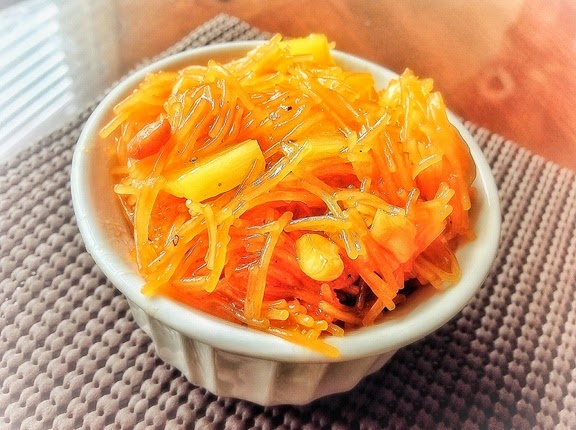Cauliflower belongs to the cruciferous vegetable family, the same plant family as broccoli, kale, cabbage and collards. You'll want to include cauliflower as one of the cruciferous vegetables you eat on a regular basis if you want to receive the fantastic health benefits provided by the cauliflower. Cauliflower is low in fat, low in carbohydrates but high in dietary fiber, folate, water, and vitamin C, possessing a high nutritional density.
Having said that there are a lot of amazing dishes you can make using this vegetable. One such simple and quick recipe is this Cauliflower and Tomato kurma, which takes very little time to cook (just 20 minutes from start to finish). It taste amazing with Idli, dosa, Chapathi, Paratha, Poori, Rice ….okay on a nutshell with anything J
So if you are looking for a side dish for dinner and you have some tomatoes and cauliflower sitting in the fridge then just get going.
Recipe
Ingredients
1 large cauliflower
4 tomatoes
3 garlic cloves
1 big piece of ginger
2 green chilies
2 tablespoon cashews
2 tablespoon shredded coconut
1 teaspoon fennel seeds /sombhu/saunf
2 tablespoon oil
Handful of chopped fresh mint leaves
Chopped coriander leaves for garnishing
1 teaspoon salt (adjust according to your taste)
4 cloves
2 cinnamon
1 bay leaf
1 cardamom
To cut cauliflower, first remove the outer leaves and then slice the florets at the base where they meet the stalks. You can further cut them, if you desire pieces that are smaller or of uniform size. Trim any brown coloration that may exist on the edges. We usually soak the cauliflower florets in hot water for 5 minutes. This is usually to kill any worms inside the florets. You can skip this if you want and just wash the cauliflower florets and keep them aside.
Grind together 2 tomatoes, ginger, garlic, green chilies, cashew nuts, fennel seeds and coconut to make a fine paste and keep it aside.
Heat the oil in a pan. When the oil is hot enough add the cloves, cinnamon, cardamom and bay leaf. When they start to splutter add the remaining 2 tomatoes chopped roughly and the salt. Sauté them for 2 minutes. Then add the ground paste and cook until the oil separates and the raw smell disappears.
Now add the cauliflower florets to the masala along with 1 cup of water and the chopped mint leaves and mix them all together. Cover and cook for 10 minutes or until the cauliflower is cooked. Add the chopped coriander leaves and switch off the flame.
Serve them as a side dish for Dosa, Roti, Idli or rice and enjoy the kurma.
-- Sang V





















